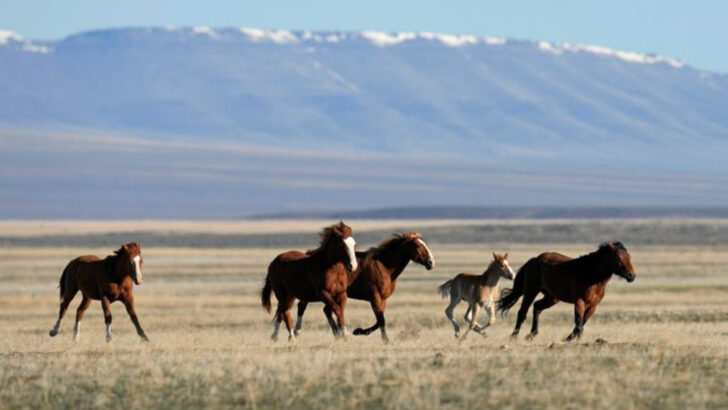Nevada’s wild mustangs are living, breathing echoes of the Old West, galloping across the desert like ghosts of a bygone era. But behind their untamed beauty lies a world few truly understand. These horses are more than just symbols of freedom—they’re survivors, warriors, and, at times, the center of fierce debate.
Did you know Nevada is home to the largest wild horse population in the United States? Or that mustangs aren’t technically “wild” at all? These are just a few of the surprises hiding behind those flowing manes and thundering hooves.
From their Spanish ancestry to the modern challenges threatening their existence, Nevada’s mustangs have a history as rugged as the land they roam. Some people fight to protect them, while others argue they don’t belong. But one thing is certain—these horses aren’t going anywhere without a fight.
Get ready to uncover the little-known truths about Nevada’s most legendary four-legged icons.
Genetic Diversity
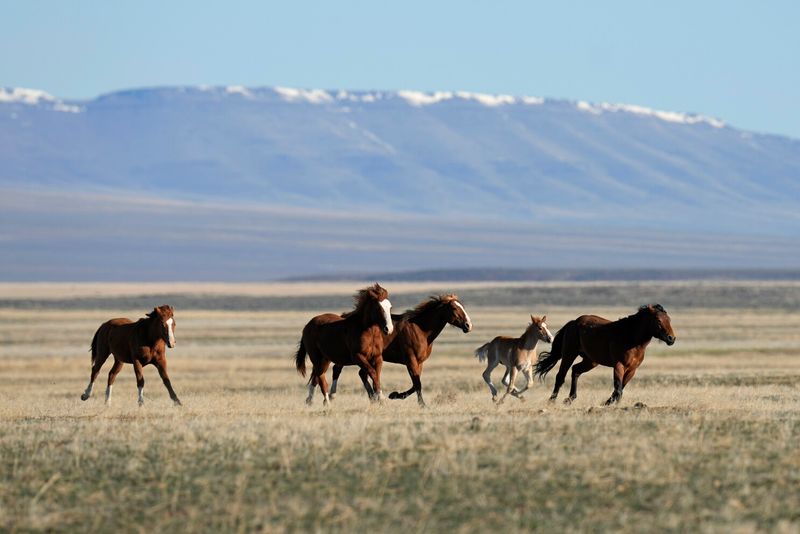
Nevada’s wild mustangs exhibit a remarkable genetic diversity, stemming from their varied ancestry. These horses trace their lineage back to Spanish horses, and over time, other breeds like draft horses and Thoroughbreds have contributed to their gene pool. This diversity is evident in their wide range of coat colors and patterns.
This genetic variety not only makes them a visually stunning sight but also contributes to their adaptability and survival in the harsh desert environment. The rich genetic tapestry of these animals helps ensure their resilience against diseases and environmental changes.
Population Management
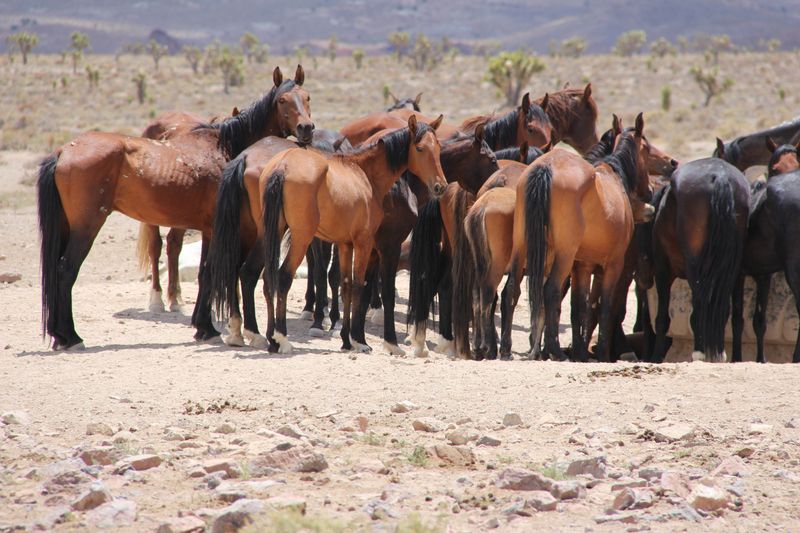
Managing the wild mustang population is an ongoing challenge in Nevada. The Bureau of Land Management (BLM) employs various methods to maintain a balanced ecosystem.
Helicopter roundups are among the most controversial techniques, yet they are seen as necessary to prevent overpopulation, which can lead to resource depletion. To manage numbers humanely, the BLM often uses fertility control measures, including immunocontraception.
These methods aim to strike a balance between preserving the natural beauty of mustang herds and ensuring the health of the rangelands they inhabit.
Adoption Programs
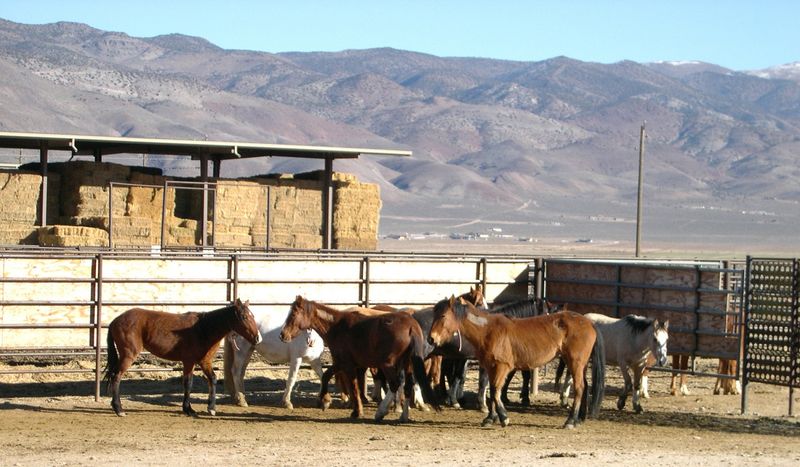
Nevada’s wild mustangs can become cherished companions through adoption programs. The Bureau of Land Management offers opportunities for individuals and families to adopt these incredible horses.
Successful adoption not only provides a home for a mustang but also helps manage the wild population, reducing the strain on natural resources. Adopters often receive training and support to ensure a smooth transition for both the horse and owner.
These programs play a vital role in connecting people with mustangs, fostering appreciation and awareness for their conservation.
Historical Significance
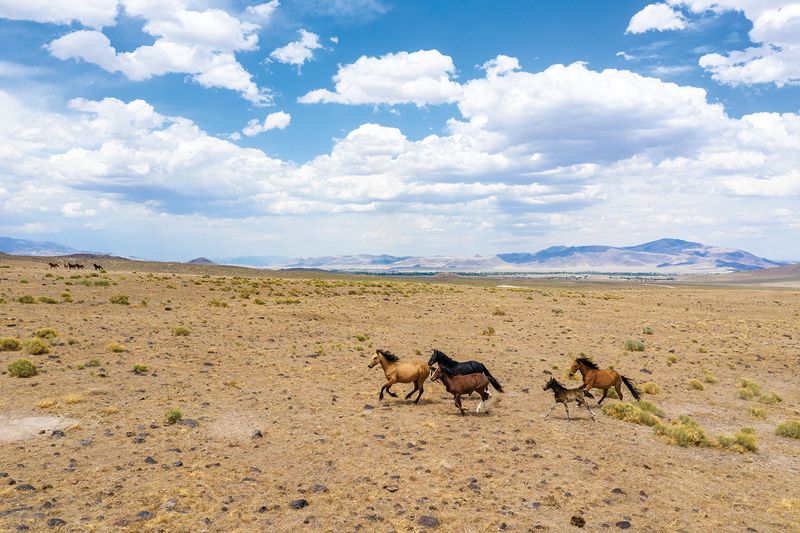
Nevada’s mustangs are more than just animals; they are living symbols of the American West. Their presence in this region dates back centuries, playing a critical role in the development of the Western frontier.
These horses were indispensable to early settlers and cowboys, aiding in transportation, agriculture, and cattle herding. Their endurance and strength made them invaluable partners in the harsh and unforgiving landscape.
Understanding their historical significance deepens our appreciation for these animals and underscores the importance of preserving their legacy.
Unique Adaptations
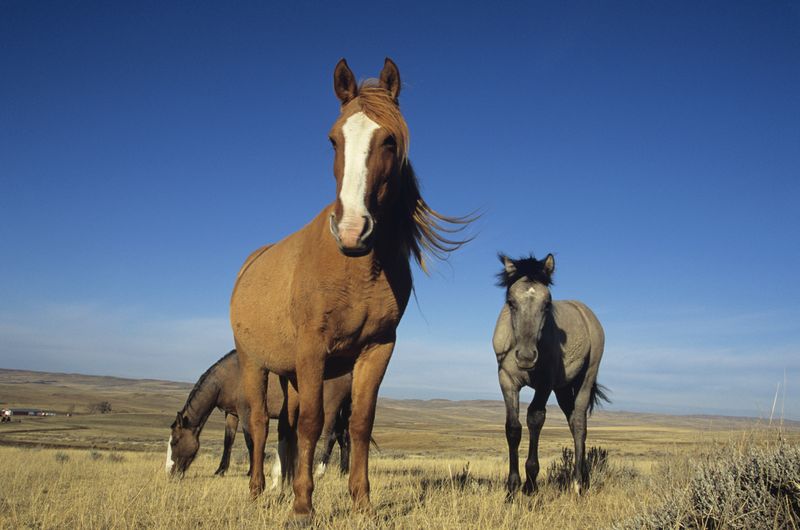
Wild mustangs have developed unique adaptations that allow them to thrive in Nevada’s arid desert landscapes. Their strong, agile hooves are well-suited for navigating rocky terrain, while their rugged coats protect them from extreme weather conditions.
Mustangs have an incredible ability to find water and food sources even in sparse environments, thanks to their keen sense of smell and memory.
These adaptations not only ensure their survival but also highlight their resilience and ability to live harmoniously in challenging settings.
Social Structure
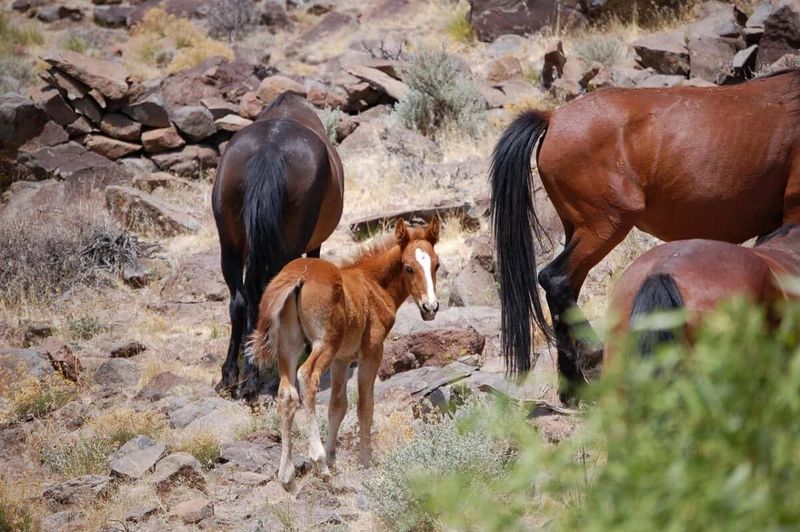
The social structure of wild mustangs is intricate and fascinating. These animals typically form small family groups known as bands, consisting of a stallion, mares, and their offspring.
The stallion leads and protects the band, while mares play crucial roles in nurturing and guiding the young. Communication within the band is often through body language, vocalizations, and signals.
Understanding these social structures provides insights into their behavior and the ways they maintain cohesion and safety in the wild.
Natural Predators
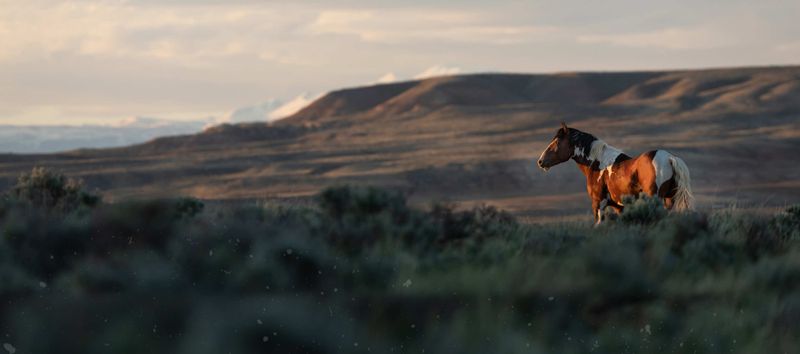
In Nevada, wild mustangs face threats from natural predators, primarily mountain lions. While adult mustangs are generally too large for these predators, foals and weakened horses can fall prey.
Predation plays a crucial role in maintaining ecological balance, controlling the population of mustangs naturally. This, in turn, helps preserve the health of the rangelands they inhabit.
By understanding the role of natural predators, conservationists can develop strategies that align with nature’s processes, ensuring sustainable populations of these iconic animals.
Cultural Impact
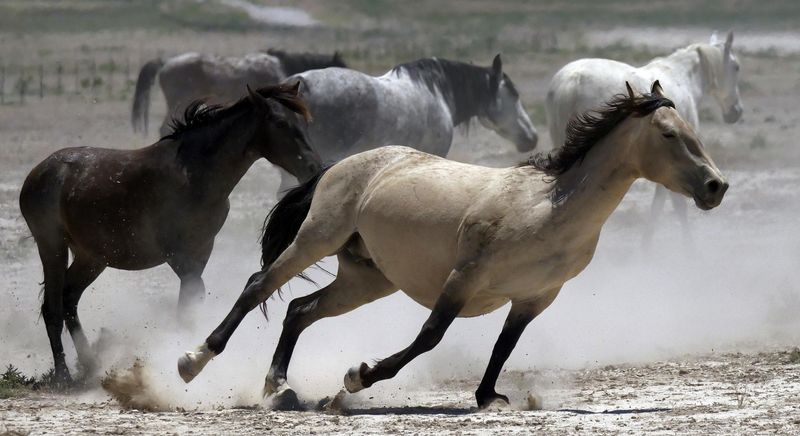
Wild mustangs hold a deep cultural significance, especially among Native American tribes in Nevada. These horses are revered as spiritual symbols and are integral to indigenous traditions and stories.
Mustangs are often portrayed in art, music, and folklore, serving as a emblem of freedom and connection to the land.
The cultural impact of mustangs is profound, and preserving their legacy is viewed as preserving an essential part of regional and tribal heritage. This enriches the cultural tapestry and historical narrative of Nevada.
Legal Protections
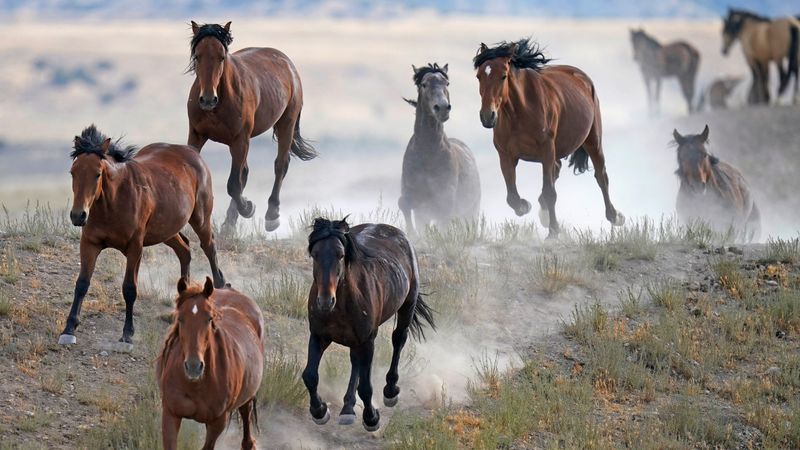
The protection of wild mustangs is enshrined in law, ensuring their preservation for future generations. The Wild Free-Roaming Horses and Burros Act of 1971 is a key piece of legislation that safeguards these animals.
This law mandates the management, protection, and study of wild horses and burros to maintain their free-roaming nature.
Legal protections are crucial in preventing exploitation and ensuring that mustangs continue to roam the landscapes of Nevada, embodying the spirit of freedom and wildness they represent.
Environmental Challenges
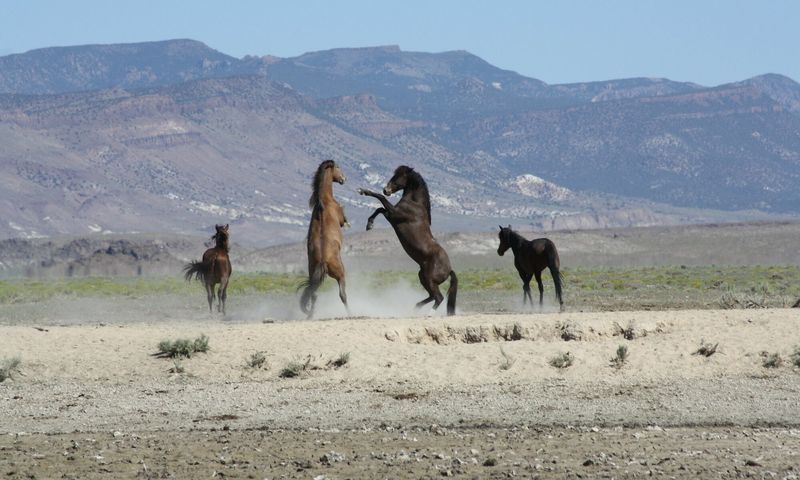
Nevada’s wild mustangs face significant environmental challenges that threaten their survival. The arid climate and limited water resources pose constant obstacles.
Droughts exacerbate these conditions, impacting the availability of forage and water. Human activities such as land development and resource extraction further strain their habitats.
Addressing these environmental challenges requires collaborative efforts to implement conservation strategies, ensuring that mustangs continue to thrive in their natural habitats despite these adversities.
Tourism and Economy
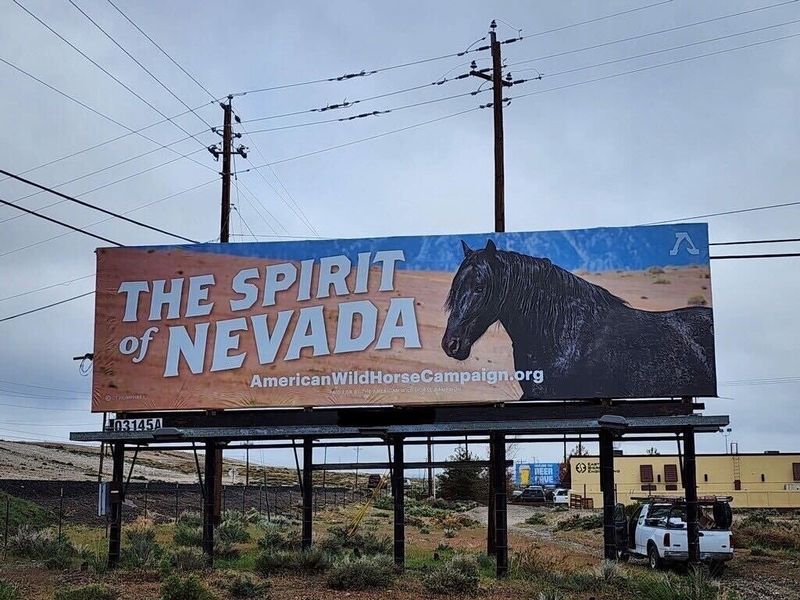
Wild mustangs contribute significantly to Nevada’s tourism industry, attracting visitors keen to witness these iconic animals in their natural habitat. Guided tours provide opportunities for tourists to observe mustangs from a safe distance, capturing unforgettable memories.
This form of wildlife tourism supports local economies and raises awareness about the importance of conservation. Visitors often leave with a deeper appreciation for the natural world and the majestic mustangs.
Promoting responsible tourism ensures that these animals continue to thrive, benefiting both the economy and conservation efforts.
Conservation Efforts
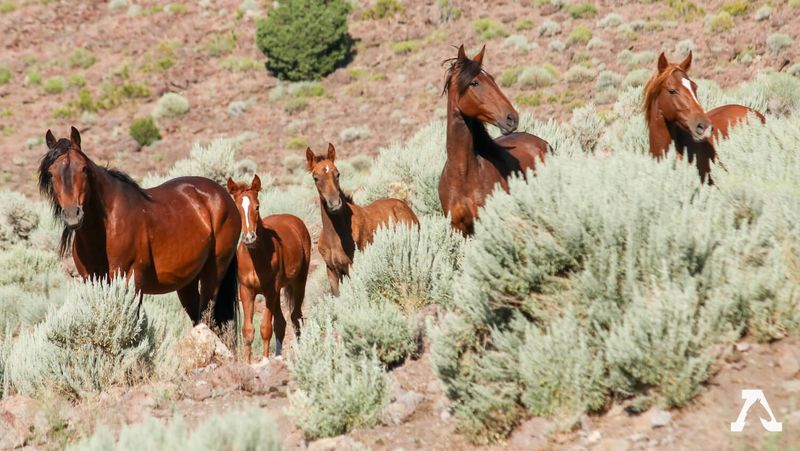
Conservation efforts for Nevada’s wild mustangs are ongoing and multifaceted. Various organizations and volunteer groups work tirelessly to ensure the well-being of these extraordinary animals.
Initiatives include habitat restoration, establishing water sources, and advocating for legal protections. Community engagement and education play significant roles in garnering support for conservation measures.
These efforts aim to maintain sustainable populations and balance ecological needs, ensuring that future generations can experience the wonder of wild mustangs in Nevada’s landscapes.

